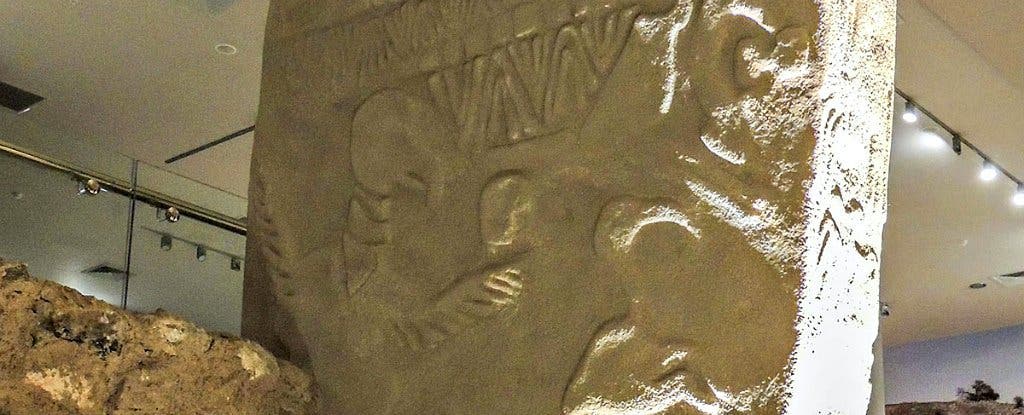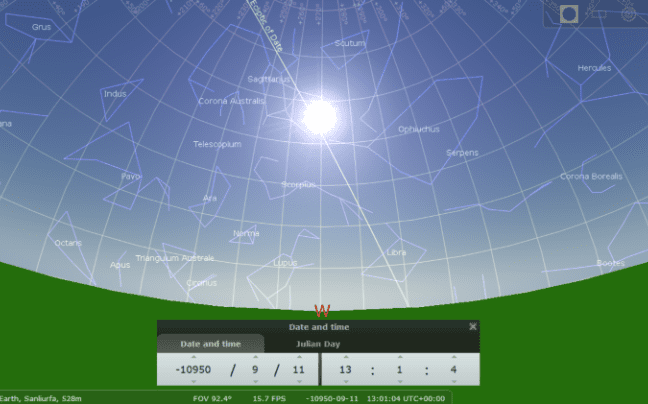Scientists have translated famous carvings found in Turkey, and they now believe it is indicative of a comet which struck Earth around 10,950 BCE — the same time a small ice age kicked off on Earth, changing the planet forever.

Some 10,950 years ago, the Younger Dryas period started to kick in. It was a huge disturbance to what was a generally warming Earth, sending the planet into an unexpected, thousand-year-long mini Ice Age. It was then that mankind started taking the first solid steps towards a true civilization, potentially as a result of this change in climate. This cold period has been studied to great extent, but we don’t really know what caused it. A comet impact is one of the leading hypotheses, but no evidence of a comet was ever found — until now.
Although it isn’t physical evidence, it’s still pretty intriguing. Researchers analyzed glyphs from a pillar known as the Vulture Stone, which suggest that a bunch of comet fragments hit the Earth some 13,000 years ago, which fits the timeline perfectly. A telling image is that of a decapitated man, which symbolizes great tragedy and loss of life.
“I think this research, along with the recent finding of a widespread platinum anomaly across the North American continent virtually seal the case in favour of [a Younger Dryas comet impact],” lead researcher Martin Sweatman of Edinburgh University told Sarah Knapton from The Telegraph. “Our work serves to reinforce that physical evidence. What is happening here is the process of paradigm change.”
The pillar was located in Gobekli Tepe in southern Turkey, one of the most exciting archaeological sites in human history and the earliest temple we’ve ever found, established over 11,000 years ago (potentially much more), 6,000 years before Stonehenge. Although the details of the structure’s function remain a mystery, there is growing evidence indicating that the site served as an observatory — aside from a site of worship.
“It appears Gobekli Tepe was, among other things, an observatory for monitoring the night sky,” Sweatman told the Press Association. “One of its pillars seems to have served as a memorial to this devastating event – probably the worst day in history since the end of the Ice Age.”

The Vulture Stone had been found decades go, but the inscriptions on it still puzzled scientists. Now, the Edinburgh team believes they’ve found the key: the symbols are actually constellations, which helped researchers put a date on the symbols as well. They used computer models to match the carvings of animals to patterns fo stars, confirming firstly that the shapes fit the astronomical situation of the time, and secondly, that the 10,950 BCE date fits the theory. The date also matches cores from Greenland, which pinpoint the Younger Dryas period as beginning around 10,890 BCE. A few decades is a more than acceptable error rate when working at this scale.
But it gets even more interesting. Computer models indicated that the comet would have been visible in the night sky for thousands of years. According to the models, the comet entered the solar system more than 20,000 years ago and was likely visible for most of this time. Brighter and brighter, generation after generation until it finally struck our planet. Considering the obvious symbolism humans attributed to it and the massive impact the comet had on the planet, it’s easy to understand why the event was given such a great importance and was immortalized on the Vulture Stone. For thousands of years, the Gobekli Tepe priests guarded the stone and probably told the story of the bright rock in the sky that came crashing down on Earth.
“If you consider that, according to astronomers, this giant comet probably arrived in the inner solar system some 20 to 30 thousand years ago, and it would have been a very visible and dominant feature of the night sky, it is hard to see how ancient people could have ignored this given the likely consequences.”
This isn’t the first time archaeology has given indications on such ancient events. Many paleolithic cave paintings and artifacts give indications on catastrophic, or otherwise significant astronomic events. It’s not exactly the most reliable evidence in the world, but when you can correlate computer models of comets with carvings from 13 millennia ago — that’s got to feel good.
The research has been published in Mediterranean Archaeology and Archaeometry.


